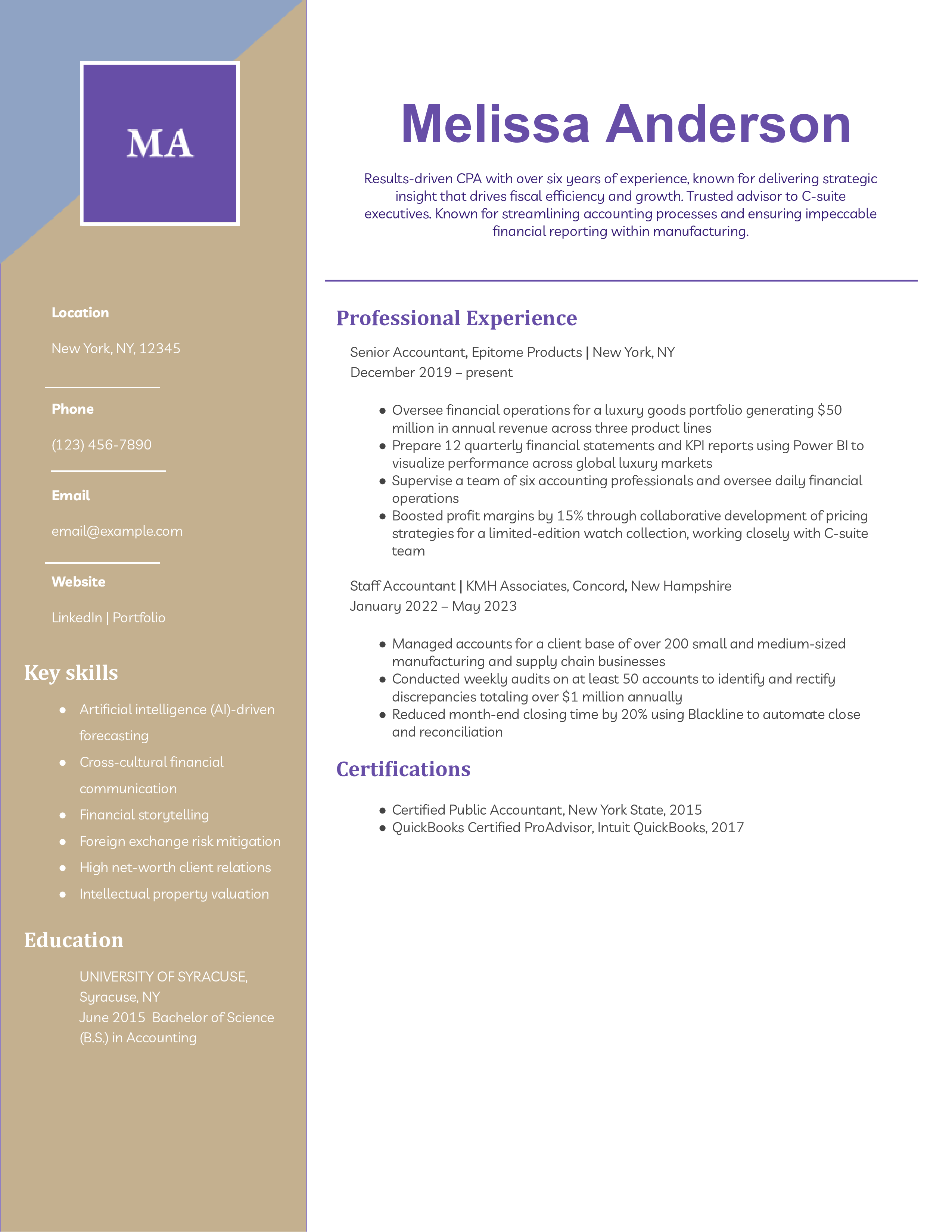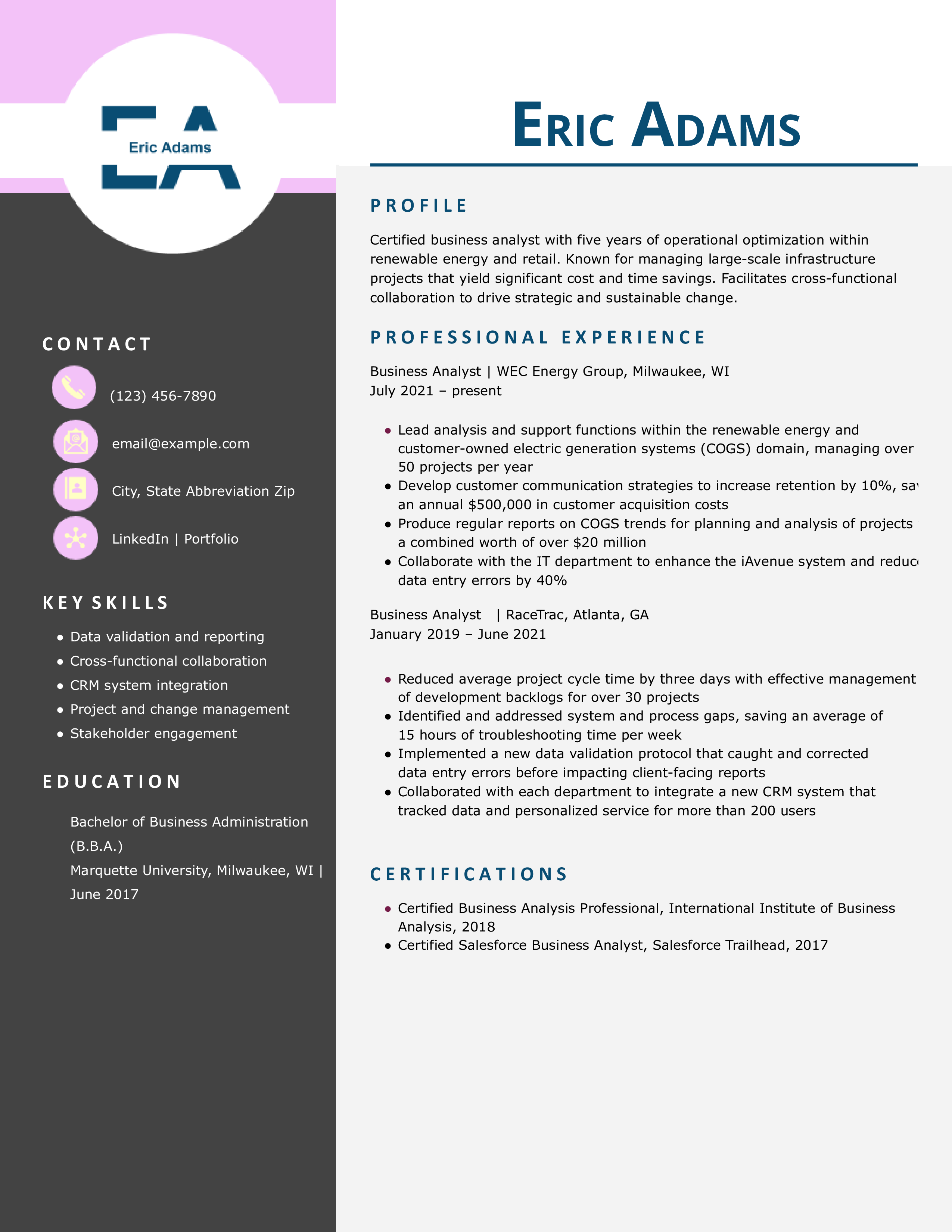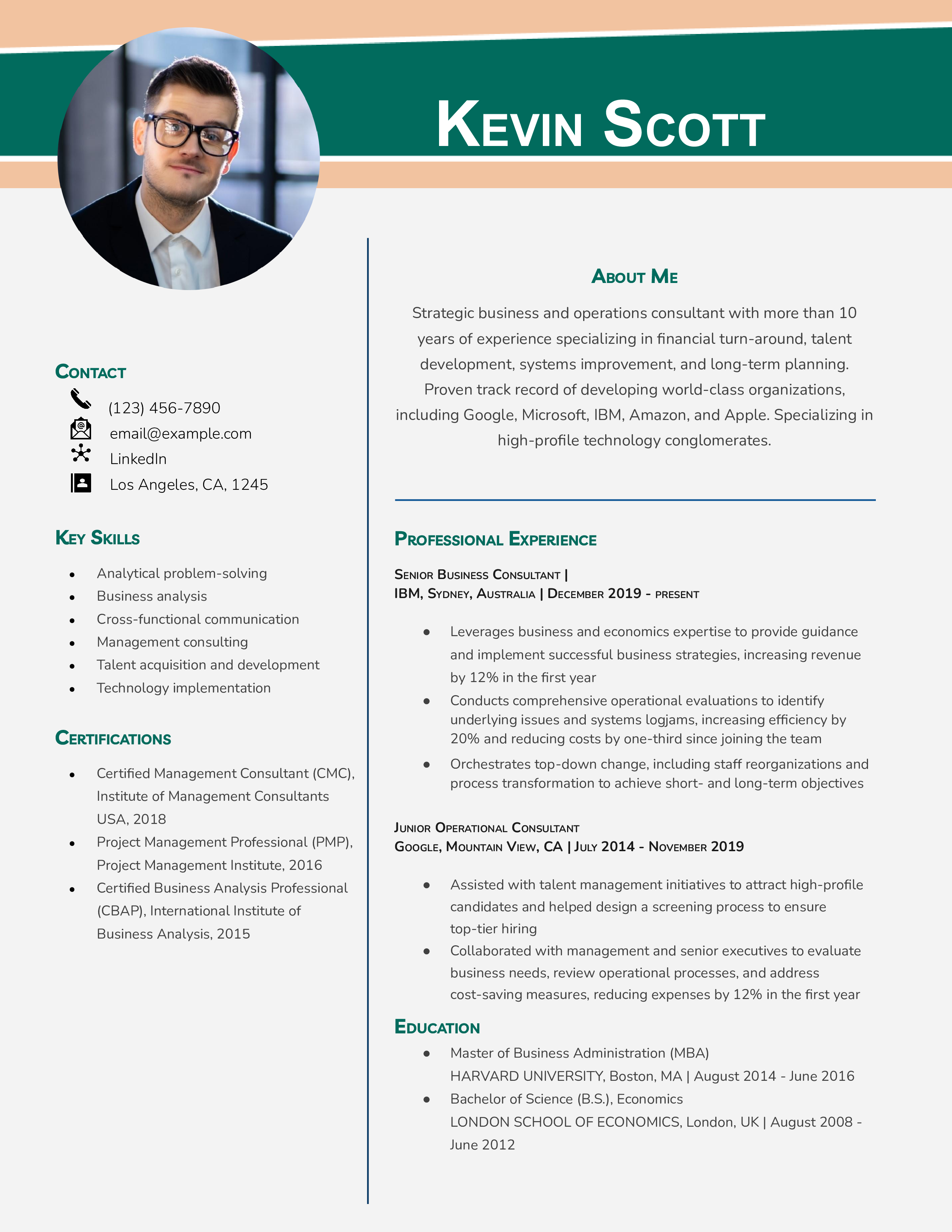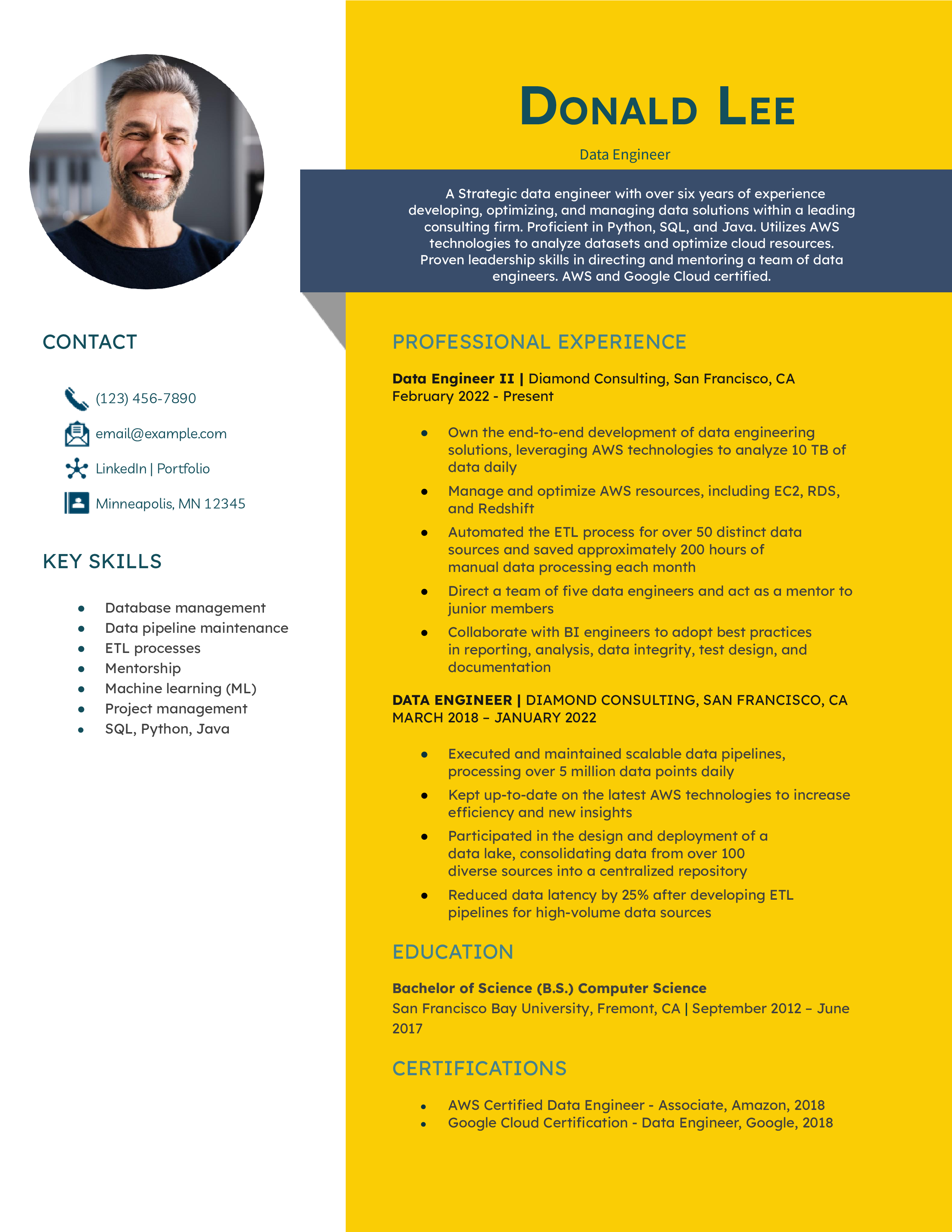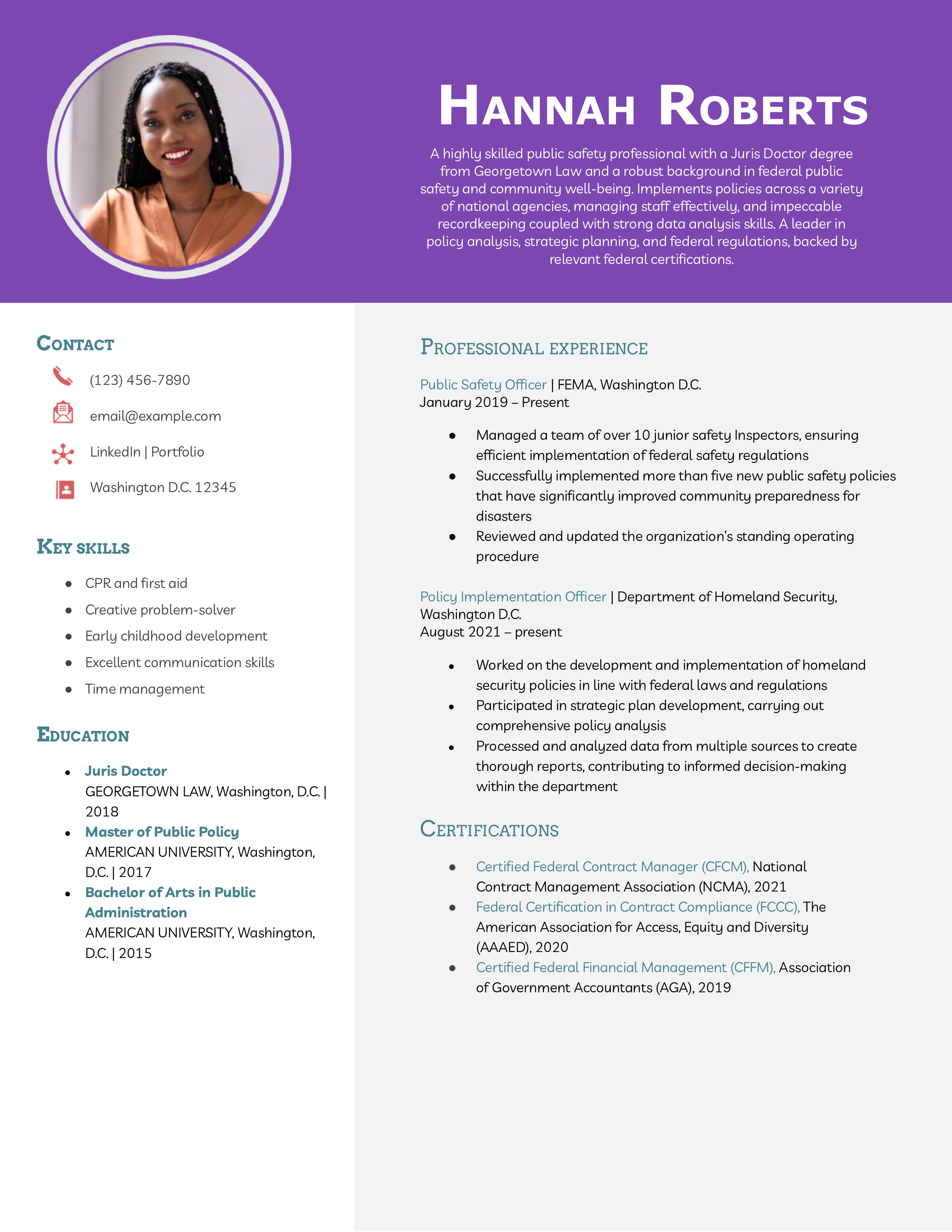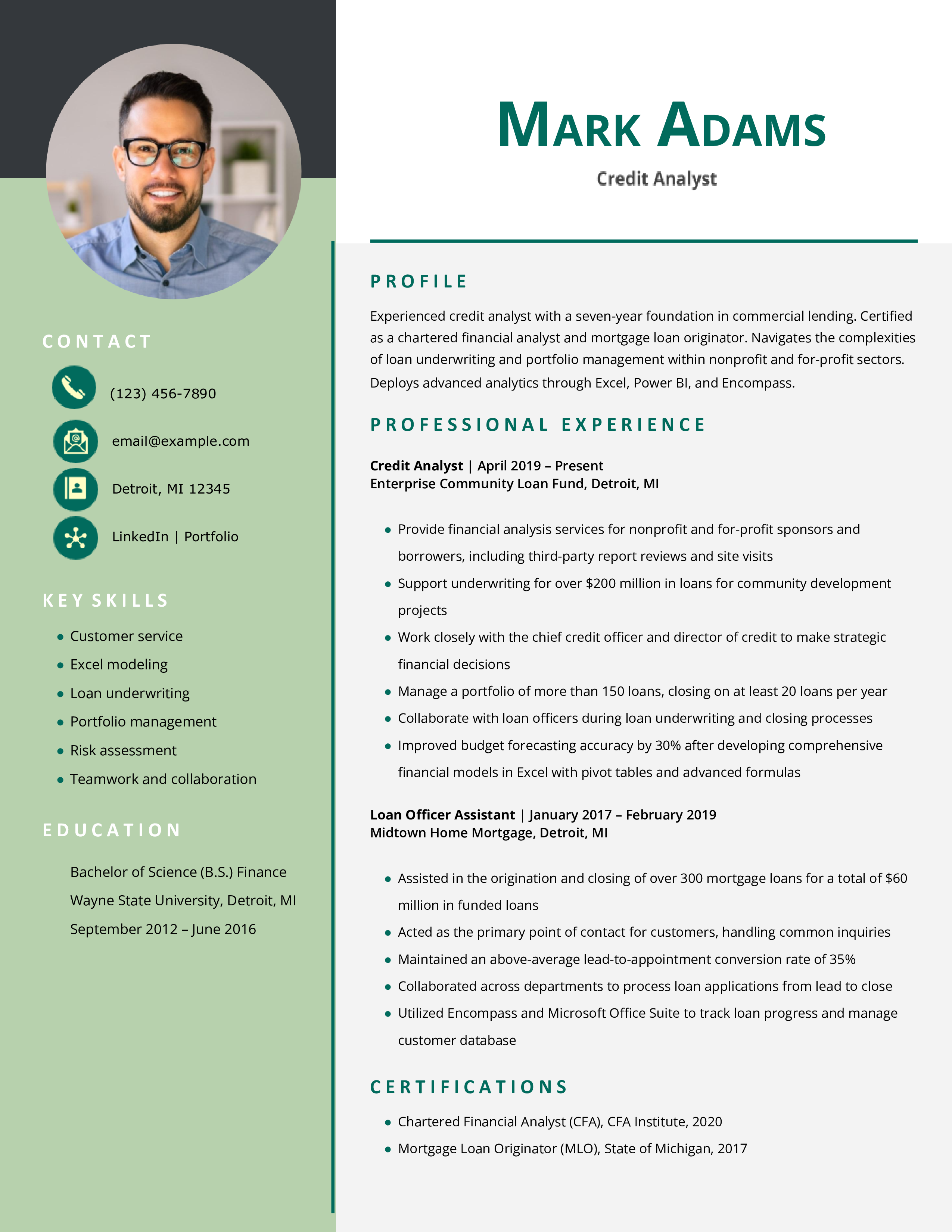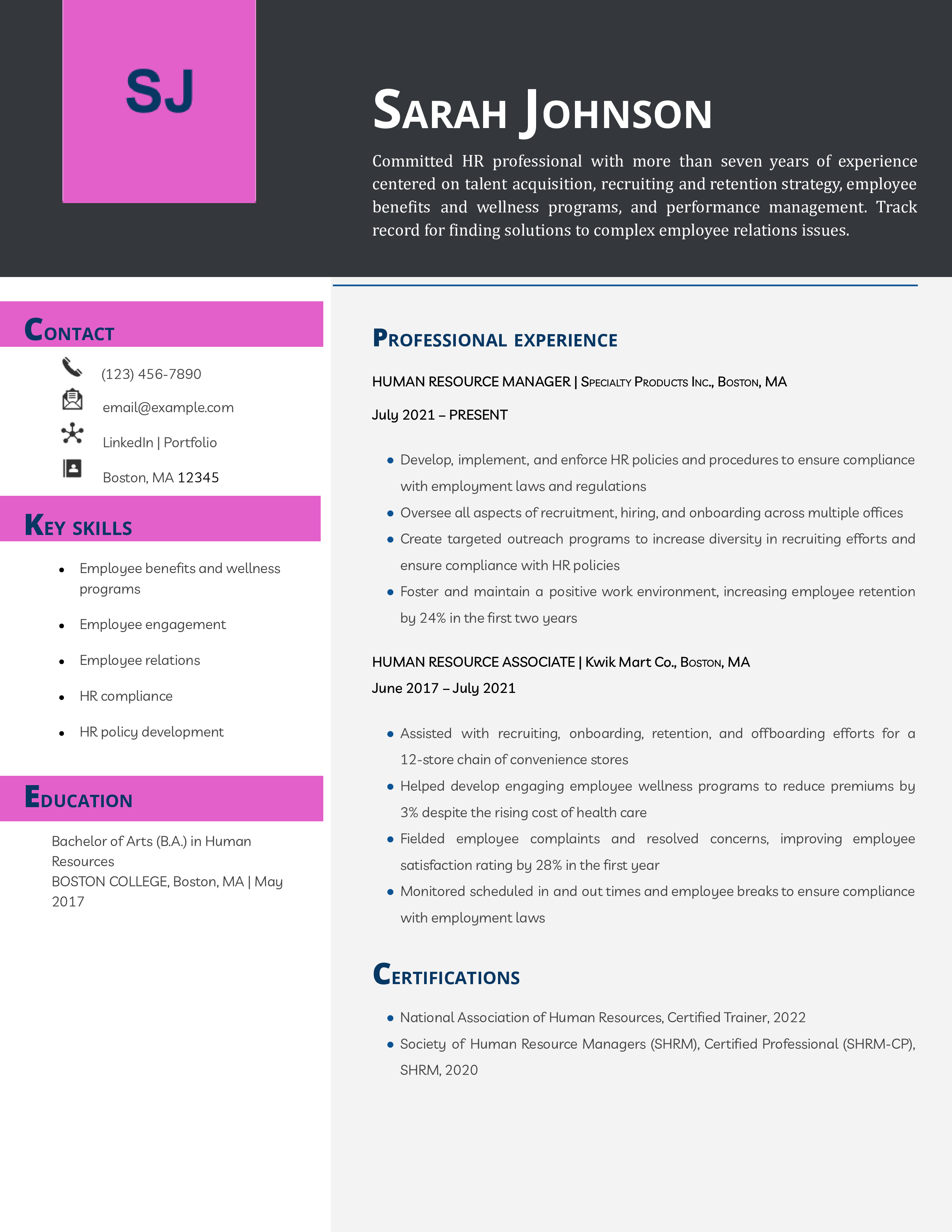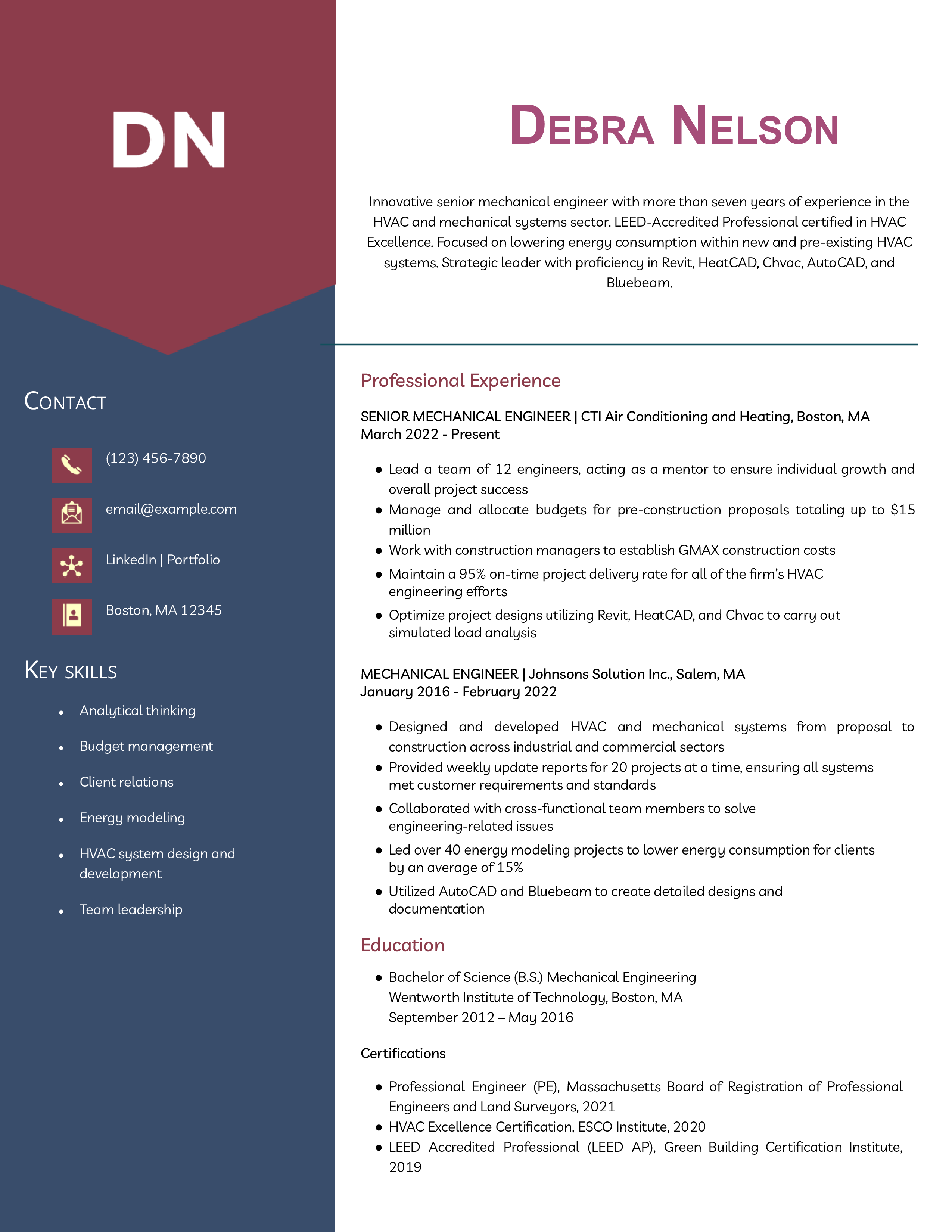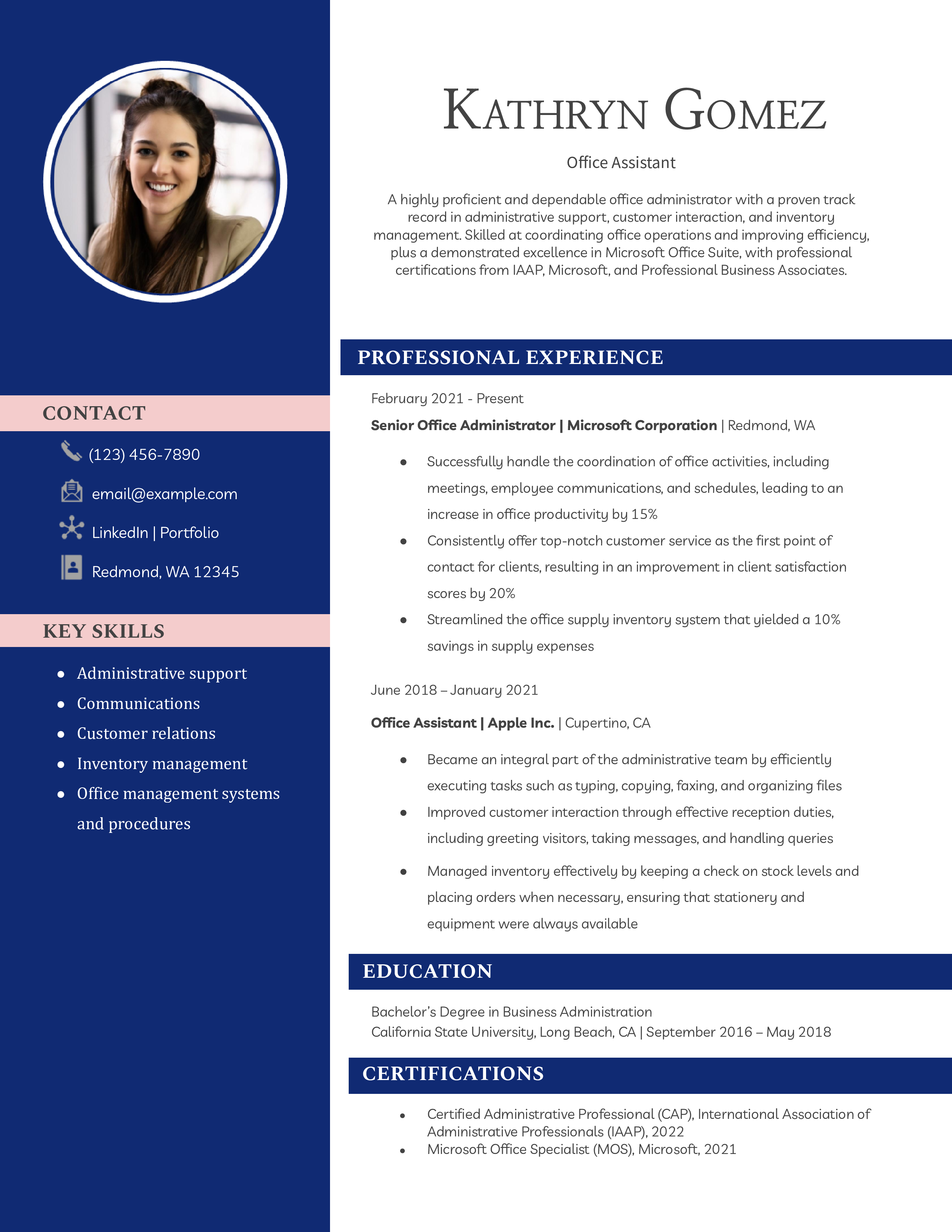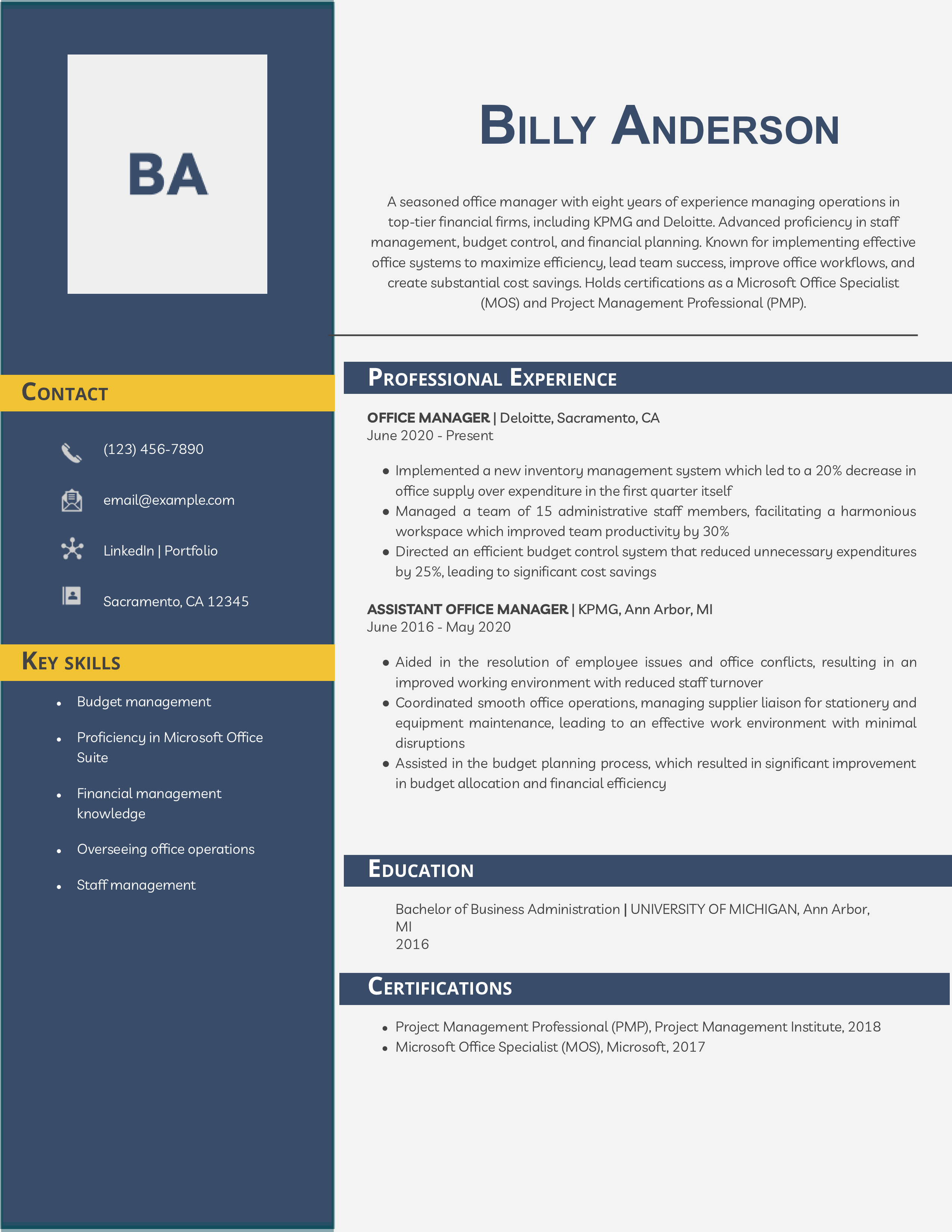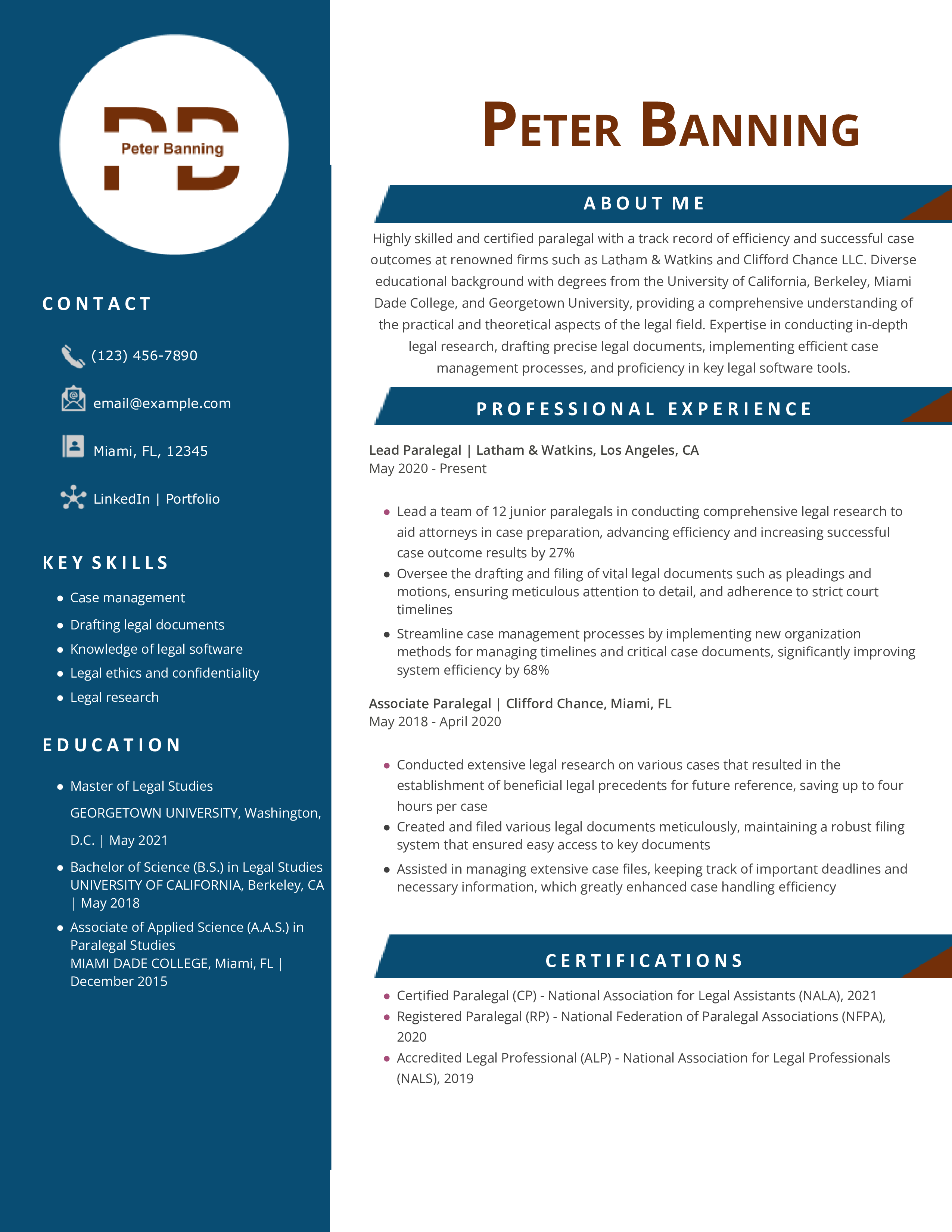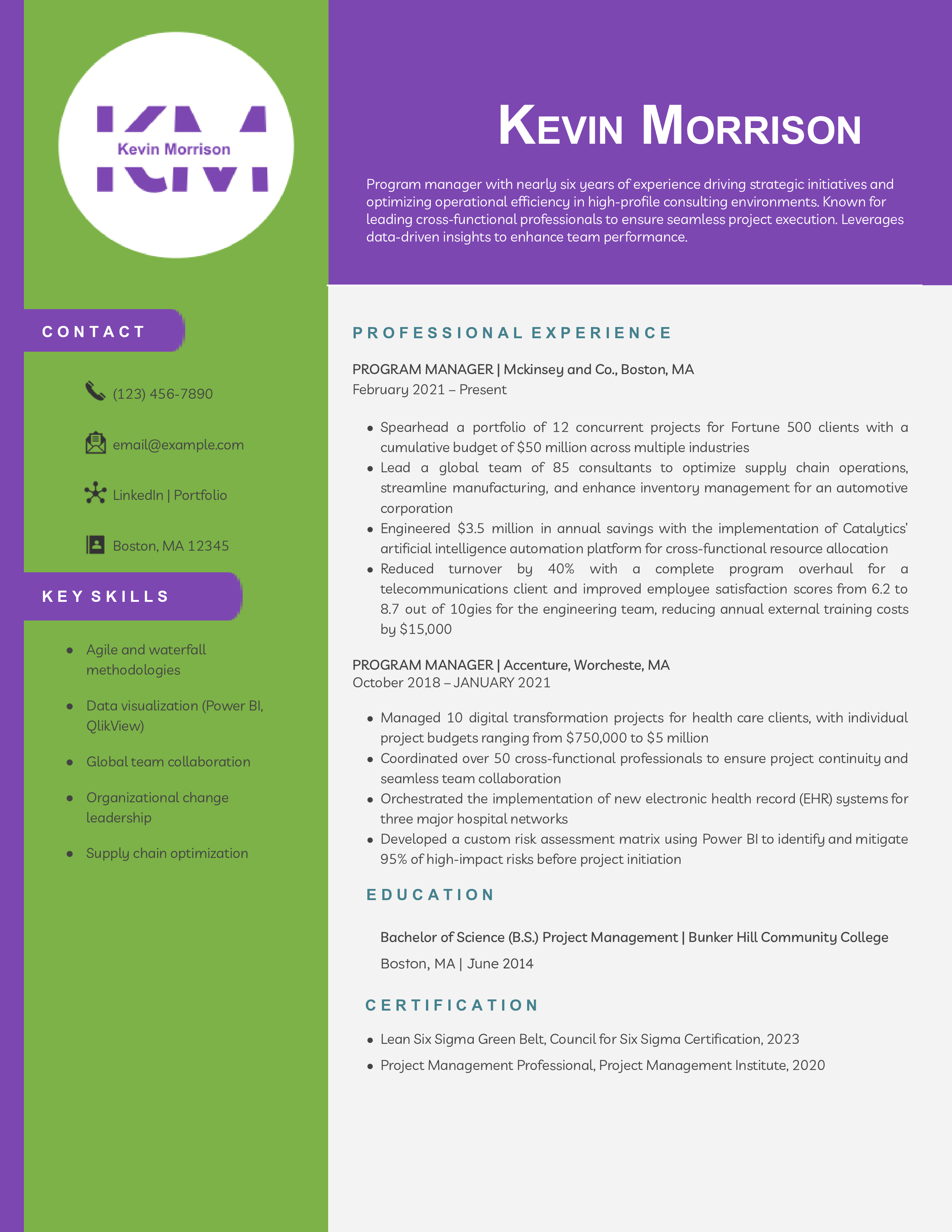Although resumes have evolved over the last century, the traditional black-and-white resume template is a classic that hasn’t gone out of style. This simple, no-nonsense design presents your work history without any frills or potential distractions.
Traditional (Classic) Resume Templates
A traditional resume is a great choice for professionals in more conservative industries. Think of traditional fields such as finance, law, and government. These industries often expect a certain aesthetic that a classic resume offers.
It’s also best suited for individuals with several years of experience. This template outlines your previous positions, demonstrating progressive career growth over the years. Emphasis is placed on past achievements, with bulleted lists for each of your jobs listed there.
Check out our How to Make a Resume guide for a step-by-step guide on creating a classic resume. It demonstrates proven techniques for crafting professional resume templates that stand out.
What makes a traditional (classic) resume template?
Traditional resume templates are easy for hiring managers to quickly scan as they process applications. Without distracting graphics, your written content becomes the focal point. Classic resumes are generally structured with the following sections:
After an engaging profile or resume summary, your work history takes center stage. Include the latest job titles you’ve held over the last 10 years in reverse chronological order. Each job should list a few key accomplishments, using numbers to quantify things like sales, improvements in processes, the number of people you’ve managed, and customer satisfaction scores.
Next, a key skills section should list your most relevant abilities. Identify soft skills and technological proficiencies from the job description that match up with your own. Then, tailor this section to show you meet the employer’s needs. Including keywords from the job description here will help your resume perform well in applicant tracking systems (ATS).
In addition to the structure of the document itself, seven major elements define a traditional resume format:
- Conservative color scheme, often using black and white or muted colors
- Classic fonts such as Times New Roman, Arial, or Calibri
- Well-defined sections labeled with a simple, bold heading
- Bullet points for easy scanning
- Consistent formatting for a polished, cohesive look
- Clean design with limited graphics and visual elements
- Standard single-column page layout with one-inch margins
When to pick a traditional (classic) resume template
This tried-and-true format is great in many situations. If you’ve been at the same job or in the same industry for multiple years, this style emphasizes your steady growth and relevant work experience. The reverse-chronological format does wonders to highlight your career path and achievements along the way.
If you’re unsure about the company culture or industry norms, the traditional template is a safe choice. This widely accepted design is familiar to hiring managers and presents your work history and skills in an easily understood way.
This template’s simple formatting performs well when it’s screened and passed through ATS software. Many employers count on this cutting-edge technology to do the heavy lifting of sorting through applications. Using a classic template increases your chances of making it past the initial screening because it’s easier to read than a resume with graphics and unconventional sections.
Top five reasons to choose a traditional resume template:
- Convey an immediate sense of professionalism and credibility
- Let hiring managers easily read and digest your resume
- Show a versatile document that can be used across a range of industries and roles
- Create a resume that performs well within ATS software
- Use a timeless design you can count on year after year
To ensure your document follows an optimal resume format, explore our Best Resume Formats page. The examples provided can help you maintain a clean, classic look.
How to get the most out of this template
Approach your traditional resume with a strategy to maximize its potential. Instead of filling out each section and hoping for the best, present your background in a way that resonates with potential employers. The following tips will maximize a classic resume template and help you connect with hiring managers.
- Craft a compelling profile: The top of your document is often the most important, as this is where hiring managers get a first glimpse of who you are. Knowing this, your profile should provide an impactful overview of your career. Present your unique value proposition, like a personal elevator pitch that intrigues the reader.
- Keep it simple: Although you’ll have plenty of space to elaborate on past experience, being concise is a top priority on any resume. Traditional resumes should be one page in length and focused only on the most impressive and relevant aspects of your work history. Avoid overcomplicating this classic, simple resume template.
- Quantify your achievements: You can turn any mundane job duty into an accomplishment by using numbers for each bullet point in your professional experience section. Aim to answer: How many? How much? How often? This provides a clear context for your responsibilities and offers concrete evidence of your success in past positions.
- Use action verbs: Avoid passive phrases like “responsible for” or “participated in.” Instead, use action verbs to describe what you’ve accomplished. Every bullet point in the professional experience section should start with an action verb. This active language engages hiring managers and helps to frame your job duties as achievements.
- Tailor your content: No matter which resume template you use, your document should be customized for every application. Only include those skills, experiences, and achievements most relevant to the job. This maximizes your chances of landing an interview, demonstrating how your background aligns with the company’s needs.
Check out our How Far Should a Resume Go guide. Its tips help you maintain a concise resume format that highlights your career progression.
More Resume Templates
Looking for a different resume template? Check out this list:
| Modern Resume Templates and Examples | Professional Resume Templates and Examples |
| Skills-Based Resume Templates and Examples |
Frequently Asked Questions: Traditional (Classic) Resume Templates
Despite the emergence of more creative and modern resume styles, the traditional resume template is still relevant and widely used in today’s competitive job market. Modern templates may look trendy, but they can become outdated quickly with the rise and fall of popular graphic design trends.
Hiring managers are familiar with traditional templates because they’ve been around for years. This style is a go-to option, especially for those in a more traditional industry like finance, law, and government, and even among high-level positions across the board.
Many free resume templates available online offer this classic template, ensuring your application meets professional standards while remaining easy to read and compatible with ATS systems. While they may not be the best choice for every situation, this basic resume template remains a safe and reliable choice for many job seekers.
There are two major differences between traditional and nontraditional resume templates: format and design. As we’ve discussed, traditional resumes follow a reverse chronological format, prioritizing your professional experience. Alternative formats such as functional, combination, and creative emphasize your key skills instead.
There are many benefits to using a traditional resume template. However, its clear and straightforward presentation may be the most beneficial aspect of this style. Readability is the number one priority for any resume, and this simple format offers an uncluttered design that focuses on written content.
Additionally, this classic resume template can be easily adapted to suit a variety of industries, roles, and experience levels. It naturally conveys a sense of professionalism which is advantageous whether you’re at the entry or senior level.
Discover how a clear resume format can enhance readability by checking out our Work Experience on a Resume guide, which underscores the benefits of a traditional design.
Resume Templates offers free, HR approved resume templates to help you create a professional resume in minutes. Choose from several template options and even pre-populate a resume from your profile.

